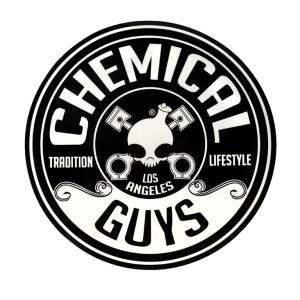How to apply sealant
Written by: Vinnie van Rooij
In the field of protective products, the sealant has become a rising star. The demand for an easy to use sealant has grown over the last decade. There is also a rise in quality of the ingredients used with the advancements made in the field of polymer-technology, resulting in better performing products.
Contents
The difference between a sealant and a wax in terms of application
Most sealants are very liquid and are applied by spraying it on a surface. Which is very different to the thick liquid, or paste form wax. The downside is that it is very easy to use way to much product, but once the application is mastered it can be a very effective and easy way to get some proper protection on a certain surface.
Another advantage of a sealant is that it is easier to formulate it into a versatile product. There are sealants that perform well on paintwork, glass, trims and even tires. Making at an AIO type product.
How to apply a sealant
There are 2 main ways of applying a sealant, the only difference is how it is applied on the surface. Both have their pro’s and cons.
- The surface needs to be prepared properly. Sealant don’t hide much of the present imperfections, so it pays to give the surface a proper polish. Because most sealant don’t like oils, it is recommended to wipe down the surface with an isopropyl alcohol mixture or a similar product.
- Apply the sealant, this can be done in 2 ways:
- Spray the sealant on a clean and unused microfibre towel, and use this towel to wipe the sealant on the surface
The downside of this approach is that the microfibre towel will actually soak in a lot of the product in the beginning, but once it is soaked, it doesn’t need extra sprays and you can keep going for longer before you need to spray some more sealant on the towel - Spray the sealant directly on the surface
The downside of this approach is that it is very easy to use to much product, and the sealant might get into small areas where it is very difficult to wipe it off
- Spray the sealant on a clean and unused microfibre towel, and use this towel to wipe the sealant on the surface
- After the sealant has been applied to the surface, use another clean and unused microfibre towel to wipe the sealant off. In some cases you need to wipe it off immediately, in other cases it needs to haze for a minute orso. Read the label before using the product.
- Unlike a wax, you can apply a second coat almost immediately after application. You should contact the manufacturer first if you want to know this for sure, but the vast majority of sealants can be re-applied within minutes after application.
- Turn your microfibre towel over, and wipe the surface again to make sure you didn’t miss anything.
Problems and how to fix them
There aren’t many mistakes you can make with a sealant. So there aren’t many problem that can occur.
The only real problem you can encounter is that you left it to long before wiping off, which made it very grabby and difficult to remove. In most cases it will be enough to re-apply the sealant over that surface and buff straight away.
Common misconceptions
- You need to see where you’ve been
Most sealants are not very visible when you apply them. In most cases you really need to look into the light to see where you’ve been. - A sealant is always made out of simple polymers
Not necessarily, a sealant can also use acrylic technology. The basis will always be polymer orientated, but this is a very broad term. - Sealants are better then wax
All depends on what you are looking for. Wax are far better at filling in Swirl and hiding imperfections, but a regular sealant is much more dirt repellent and chemically resistant. Both have their pro’s and cons. - A sealant is always liquid
There is no reason why a sealant can’t be paste form. But it is true that the majority of sealants are liquid, which is also one of the reasons why they are so easy to apply. - A sealant needs to be applied as thickly as possible
Wrong, as with most product, a little goes a long way. Less is more. Apply it as thin as you can. - Sealant are great on glass and trim
Totally depends on the product. There are several sealants that work very well on paintwork, glass and trims. But not all. You can ask the manufacturer or simply try it out for yourself. - A sealant will give much more gloss
Not necessarily. Some products are better then other in giving gloss. Most waxes will give a warm glow, whereas most sealants will give a mirror-like gloss. However, it is true that it is a bit easier to use polymers with a very high refractive index in a sealant. And since a wax is opaque in nature, it is very difficult (almost impossible) to get the same level of clarity with a wax as with a sealant. However, these differences are so small that it is unlikely that the human eye can see the difference between them.
And as always, don’t forget to take a few steps back and enjoy the fruit of your labor.
 Detailing a motorbike isn't all that different to any other surface. The main different will be the technique and the tools used because of working in small spaces. Motorbike cleaning requires more effort then most other vehicles, due to small crevices and tight corners....
Detailing a motorbike isn't all that different to any other surface. The main different will be the technique and the tools used because of working in small spaces. Motorbike cleaning requires more effort then most other vehicles, due to small crevices and tight corners.... It is often asked on detailing fora and social media: "what is the best sealant". Off course there is a difference between certain products and brands, but it is important to know what you are asking. In this guide I will try to explain what the problem is with this question unless it is asked more in-depth....
It is often asked on detailing fora and social media: "what is the best sealant". Off course there is a difference between certain products and brands, but it is important to know what you are asking. In this guide I will try to explain what the problem is with this question unless it is asked more in-depth.... 3D is an American based manufacturer of detailing products. Apart from also distributing other brands they offer a private label service. ...
3D is an American based manufacturer of detailing products. Apart from also distributing other brands they offer a private label service. ... Wiper judder refers to "jumping" wipers that shake/jump/judder when moving over the windscreen. The rubber from the windscreen wiper sticks to the glass surface even though the wiper arm continues to move. The rubber "jumps" over the surface instead of gliding smoothly over the glass....
Wiper judder refers to "jumping" wipers that shake/jump/judder when moving over the windscreen. The rubber from the windscreen wiper sticks to the glass surface even though the wiper arm continues to move. The rubber "jumps" over the surface instead of gliding smoothly over the glass.... Chemical Guys is a manufacturer of a very wide variety of detailing products. The company was founded around 1968 and is available in 50 countries worldwide. Chemical Guys are known for being a bit quirky with a firm aim at high quality products at an affordable price....
Chemical Guys is a manufacturer of a very wide variety of detailing products. The company was founded around 1968 and is available in 50 countries worldwide. Chemical Guys are known for being a bit quirky with a firm aim at high quality products at an affordable price.... Fabric protection is a form of treatment designed to prevent the fabric from suffering from contaminants. This could be in the form of liquids, dust, oil and other forms of unwanted particles that could get absorbed into the fibers of the fabric....
Fabric protection is a form of treatment designed to prevent the fabric from suffering from contaminants. This could be in the form of liquids, dust, oil and other forms of unwanted particles that could get absorbed into the fibers of the fabric....







[…] synthetic longer lasting, more durable materials than natural waxes. The technology for waxes and paint sealants has come a long way and both can be great options to keep a vehicle’s paint and other surfaces […]